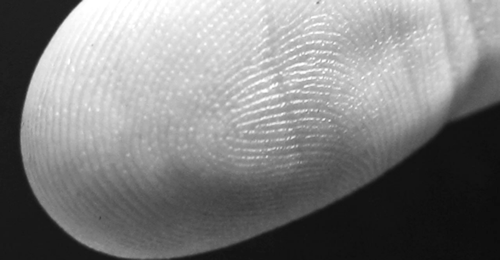
As a result of the U.S. Coast Guard’s push to embrace social media, many of the top Admirals have entered the “blogosphere” as a means to highlight topics and concerns relevant to sea-going professionals. Biometrics is one such topic.
Today, Rear Admiral Kevin Cook published a post titled “Biometrics At Sea – closing the revolving door” which discusses how technology is helping the CG identify professional smugglers among the throngs of migrants struggling to enter this country by boat. but the topic isn’t new, the idea was first published in Proceedings Magazine in early 2009.
Does this mean the CG’s use of biometrics is about to expand? Only time will tell but let’s take a brief look at the topic…
In the blog post Adm. Cook writes:
In November 2006, USCGC Key Largo got underway with the portable biometrics collection equipment. Within days, the Coast Guard had interdicted three small boats attempting to enter the U.S. with 36 migrants aboard—business as usual in the Mona Pass.
Cutter personnel took biometric scans and a digital photo of each migrant and annotated data packets with information about the interdiction.
Five “Hits” – Five of the migrants had interacted with law enforcement or immigration authorities in the past—four were recidivists, and the fifth migrant’s file revealed a felony drug conviction and previous deportation.
Emboldened by this success, the Coast Guard deployed portable collection units to all five cutters based in San Juan.
Program Successes – From deployment of the Biometrics-at-Sea initiative in November 2006 through the end of 2008, the Coast Guard interdicted 1,986 migrants attempting to enter the United States. Of this group, 459 (more than 23 percent) were recidivist entrants, prior deportees, felons, or otherwise had some derogatory information within the database. As appropriate, these were forwarded for prosecution. In the USCG photo above is a Coast Guard cutter with migrants on deck. The vessel was turned over to local police.
Since the introduction of biometrics, the migrant flow decreased nearly 75 percent. Read The Full Post…
So what does this have to do with mariners? The topic of biometrics is also the topic of personal privacy and freedom. In this case the privacy of smugglers has been compromised for the safety of the refugees but the proven success of any technology immediately raises the question “Where else can we implement this technology” the logical conclusion to which is mariner credidation and control.
In April of this year the CG took a step to futher the use of biometrics to trck and control mariners in the purchase of portable, GPS and digital camera enhanced TWIC biometric readers from MAXid, a biometric technology company. These units provide an “integrated mobile solution for badging and identity management requirements that is capable of checking TWIC, CAC, PIV, PIV-I, FRAC cards, passports and licenses.”
But the bigger questions are “Is biometrics capable of keeping private information secure?” and “What are the problems with the use of biometrics for these purposes?”. To answer these questions we need to track the collection of mariner’s biometric data to the original Department Of Homeland Security proposal. In a Notice Of Proposed Rulemaking dated April, 2008 the department wrote:
The Department of Homeland Security (DHS) proposes to establish an exit program at all air and sea ports of departure in the United States. It would require aliens who are subject to the United States Visitor and Immigrant Status Indicator Technology (US-VISIT) program biometric requirements upon entering the United States to provide biometric information to commercial air and vessel carriers before departing from the United States at air and sea ports of entry. It does not propose to apply these requirements to persons departing the United States on certain private carriers or small carriers. Comments on the proposal should be submitted by June 23.
In response to this announcement, gCaptain asked the following questions in April of last year:
This proposal worries me for a few reasons. First, proposals made by the US are always considered and often implemented by other maritime nations meaning the likelihood my biometric data, and that of seamen worldwide, will soon be required and subsequently stored in foreign databases just increased. This is a problem. The US itself has a less than stellar record in the protection of personal information; can we expect less prosperous nations to succeed where we have failed?
The reason biometrics are of particular concern is the permanence of the data coupled with the common practice of using them as passwords to gain access to secure data and facilities. To understand the issue we first ask the question; what is a password? Continue reading…
To date we do not have answers to these and other questions brought up in our 2009 article DHS Biometric Database – Concerns And A Controversial Solution but we promise to continue our coverage of the topic as the information unfolds.
What are your concerns with biometrics and the use of technology to track mariners? Please leave your thoughts in the comments section below.
Related Links:
The Use Of Biometrics – Video
Coast Guard biometrics put brakes on illegal immigration- Article

 Join The Club
Join The Club











